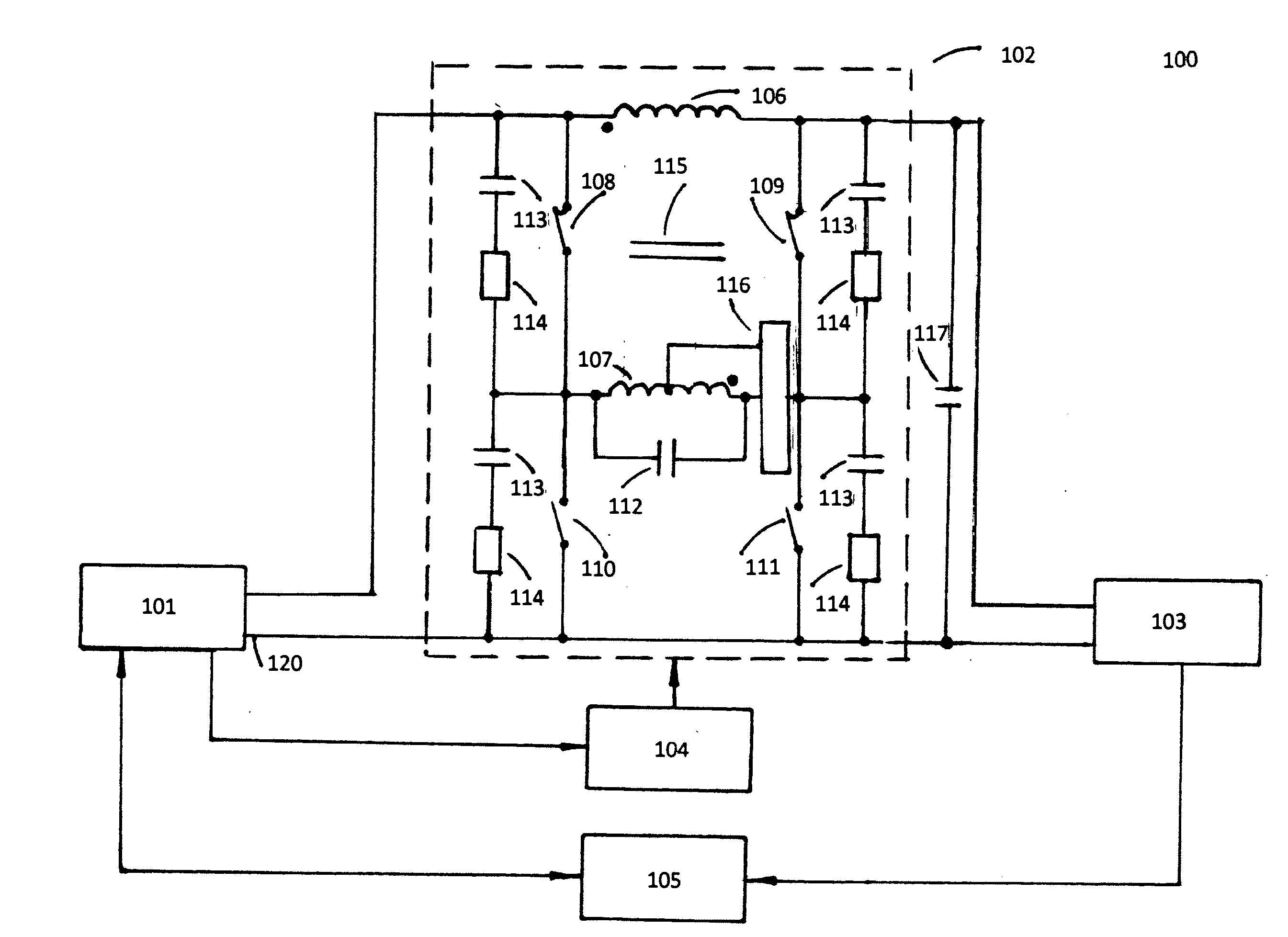Method and apparatus for regulating voltage
a voltage regulator and voltage technology, applied in the direction of electric variable regulation, process and machine control, instruments, etc., can solve the problems of circuits, circuits, and devices being damaged,
- Summary
- Abstract
- Description
- Claims
- Application Information
AI Technical Summary
Benefits of technology
Problems solved by technology
Method used
Image
Examples
Embodiment Construction
[0025] The present invention will now be described more specifically with references to the figures. It is to be noted that the following descriptions of preferred embodiments of this invention are presented herein for purposes of illustration and description only; it is not intended to be exhaustive or to be limited to the precise forms disclosed, since the voltage regulator according to the invention may be advantageously used and modified in various fields.
[0026]FIG. 1 illustrates a voltage regulator 100 in one embodiment of the present invention comprising a power circuit 102 and a control circuit 104. The voltage regulator 100 has an input that is electrically connected with the AC power source 101 in any conventional manner and an output that is connected with the electrical load 103. The control circuit 104 can be any control circuit known in the art and is electrically connected with the power circuit 102 and the AC power source 101. A protection circuit 105 is also electri...
PUM
 Login to View More
Login to View More Abstract
Description
Claims
Application Information
 Login to View More
Login to View More - R&D
- Intellectual Property
- Life Sciences
- Materials
- Tech Scout
- Unparalleled Data Quality
- Higher Quality Content
- 60% Fewer Hallucinations
Browse by: Latest US Patents, China's latest patents, Technical Efficacy Thesaurus, Application Domain, Technology Topic, Popular Technical Reports.
© 2025 PatSnap. All rights reserved.Legal|Privacy policy|Modern Slavery Act Transparency Statement|Sitemap|About US| Contact US: help@patsnap.com



